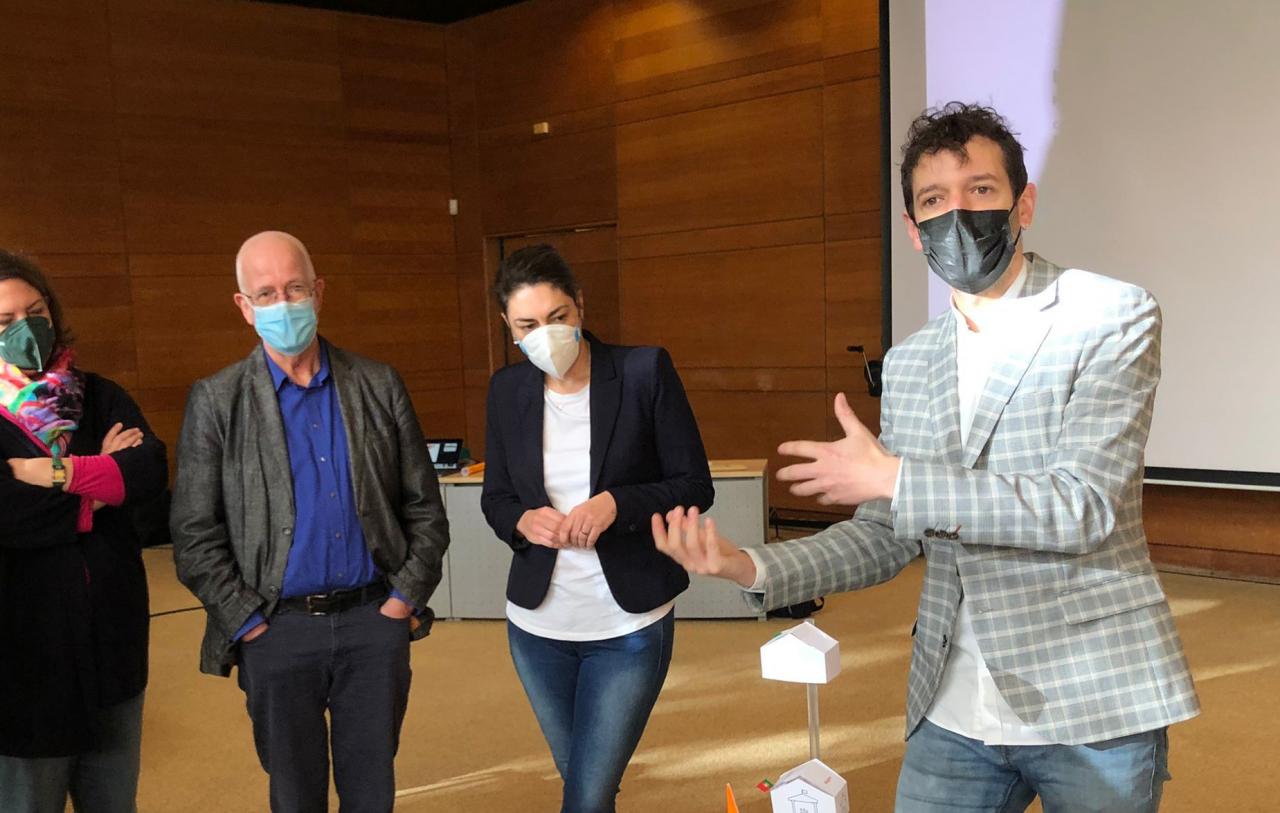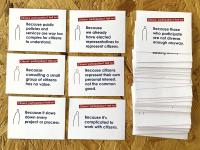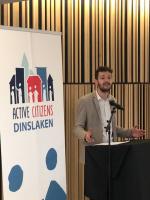
Christophe Gouache, the Active Citizens network Lead Expert, is a designer of public policy but also a teacher at “Science Po” Lille, a trainer at the National Institute of Territorial Studies in Strasbourg and, occasionally, a researcher in the framework of European research programs. He reveals to us, among other things, the keys to success that have made it possible to unite the 7 member countries of the Urbact network and his vision of participative democracy.

What has been your role in this program?
When my application as a leader of the Urbact – Active Citizens program has been accepted, the city of Agen had to choose 3 experts ranked in pecking order through the Urbact Expert Pool, of which I was a member. After a series of interviews, I was selected. My role is firstly to co-host the network of the 7 member countries with Nicolas Castet, Coordinator of the city of Agen, but also to bring my expertise on the theme of Participative Democracy throughout the program. During this mission, I first carried out a Baseline Study to assess the state of participative democracy in the 7 participating cities. Similarly, throughout the life of the network, I have been in charge of designing a number of publications, reports and analyzes to highlight the progress of the program and the network. Outside this framework, I was commissioned by the city of Agen and the city of Saint Quentin to support them in the implementation of certain experiments.
What did you expect from the program?
For some time, I have been working on what is at stake in citizen participation and new collaborative forms of local governance. This was particularly the case through a research-action that we have conducted for 4 years with 4 Brussels municipalities on a project called “ville-co” for “collaborative city”. This project was already intended to transform local governance towards a more collaborative practice of governance. Similarly, I supported French territories around a prospective and participative toolbox in order to set up their future.
When I was approached by the city of Agen, the Active Citizens project eminently echoed both the actions I had already carried out but also the very meaning of the Political Designer’s job, including the citizens’ involvement in the politic vision is crucial. Based on these observations, for me, Active Citizens is the opportunity to experiment different ways of involving residents in local governance in European territories.
Initially, I did not expect anything specific because I had no knowledge of the maturity of the cities on the matter. I found later that some of them were much more advanced than others. However, this delay is not a problem in the Urbact program. As a matter of fact, all the cities follow each other to discuss their practices and their feedback. They challenge each other. Moreover, we noticed that even the most advanced cities were not won over to the cause of participative democracy.
What were the crucial stages of the program for you?

During our first meeting in October 2019, for the official launch of Active Citizens, I designed a game called “Citizen participation, please don’t! », or 40 good reasons not to practice participative democracy as a public administration. It is therefore on a snub that we started this meeting. Beyond the provocation and the playful aspect of the game, the objective was to establish from the start an extremely honest and transparent discussion on each of the cities situation. This allowed us to unlock a certain number of political, psychological and economic obstacles from the start, which could have obstructed the process.
Likewise, it has been crucial, during the 3 years of the network’s life, to establish a great "friendship" between the network partners. The international meetings have therefore been designed to be unifying moments of professional and interpersonal links. These moments of conviviality and exchanges have been thought out and set up over the long term around two convictions: "To work well together, you have to enjoy doing it" and "The friendlier the relationship, the more honesty there will be in exchanges”.
The program allowed us to carry out experiments in a flexible way and at a lower cost. All the cities got into the game by proposing 2, 3, 4 or 5 actions and entered a positive competition. The experiments had two beneficial effects. Firstly, the municipalities dared to implement participative democracy actions that they had never experienced before. In fact, going to meet citizens, serving coffee in the street, making a diagnosis in the middle of a park... these were not conventional actions. Secondly, they realized the effectiveness of the experiments and their simplicity of implementation. Today, with practice, there is a form of systematization of this type of action.
Some of its experiments have become permanent actions and are included in the Integrated Action Plans (PAI) of cities. In fact, at the end of the Urbact program, each of the cities must build its policy of participative democracy and commit to implementing concrete actions integrated into the heart of the administration and the territory.
What is the place of the participative democracy today?
Citizen participation is not part of the DNA of our public institutions. On the other hand, there is a real awareness at the national level of this need to reconnect public protagonists to citizens.
Cities did not wait for public authorities to become aware before developing actions in favor of participative democracy. This momentum was launched by local elected officials at the municipalities level. Today, there are many cities that have implemented participative processes for several years now, particularly by integrating a budget line dedicated to this approach.
Where today participative democracy is the result of a voluntary and committed effort from a certain number of elected officials, it should become an ordinary practice in the design of public action. There is therefore a real challenge in terms of training and raising the awareness of agents, citizens and elected officials in their postures and roles.
What were the contributions and benefits of the program?

There has been a double level of involvement and instantiation of participation in administrative practices. In fact, the territories have realized that a certain number of participative experiments can be done informally and on an ad hoc basis. This "pop-up" format is a new way of establishing dialogue and goes against institutionalized processes that are intended to be more sustainable (e.g. neighborhood councils, recurrent cycles of meetings, etc.).
Similarly, it is possible to consolidate this approach by creating an internal participative function under different models (dedicated or referent service). In the PAI, we see that those who did not have this function before the program want to create it. This shows a strong commitment from the cities, which dedicate financial and human resources to implement citizen participation within their community.
The Urbact program is coming to an end… what are the next steps?
In August 2022, the Active Citizens network funded by Urbact stops. On the other hand, the deployment of action plans via the PAI will begin and extend over several years. We are focused on continuing working together on this phase. Integration into another Urbact or European network on academic research projects... several approaches are being considered. Beyond these opportunities, we want to keep the network alive informally.

